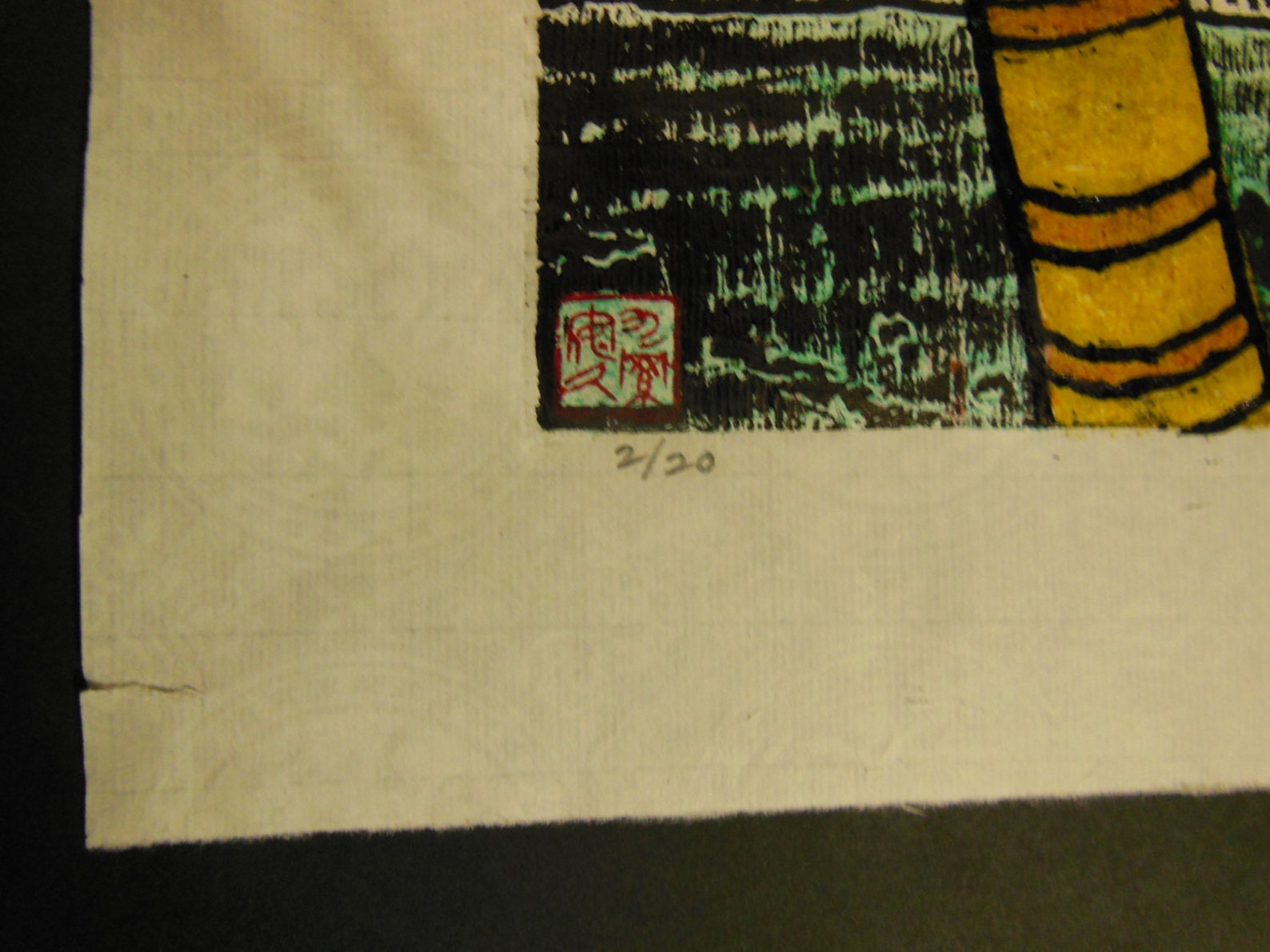

The first, “Breakfast Bee?” (the nuthatch and the bee), is in the Wingtip Press 2019 Leftovers print exchange. Moku hanga is a traditional Japanese form of woodblock printmaking notable for black outlines, vibrant colors, and angled perspectives (think of Hokusai and Hirosada). Here are my first prints using this process.
KOGUCHI MOKU HANGA PRINT WOOD JAPANESE SERIES
San Francisco-based Bay Area Rapid Transit (BART) selected Berkeley artist Miwako Nishizawa, born in Kyoto Japan, to create pieces for its 2016 poster art series using the moku hanga woodblock technique. Japanese-style Woodblock Printing (moku-hanga) Basics. McClains Printmaking Supplies is a good source for tools, blocks, and books about the process.Ĭarving can take a long time, but it’s an opportunity for contemplation, for “being in the moment” with your image, and the blocks eventually become works of art, along with the prints. A basic introduction to Japanese woodblock printmaking used during demonstrations. As the images are all hand-pulled, moku hanga prints don’t need a press, and using water-based inks makes this for an easy clean-up. Traditionally, separate woodblocks are carved and printed for each color. The actual print is made using a handheld baren as a burnisher.
KOGUCHI MOKU HANGA PRINT WOOD JAPANESE REGISTRATION
For multiple colors, multiple blocks are carved, with exact registration (kento) marks on each block. In Moku Hanga, one applies colors to the woodblock with brushes, and uses a kento registration system for printing a paper multiple times.

Hand Carved Japanese Style 4 Colour Wood Block Print of Giant Octopus & Paper Boat ad vertisement by minouette Ad vertisement from shop minouette minouette From shop minouette. To make a print, the block’s surface is saturated with water color and nori paste, and then slightly dampened paper is laid down and pressed with a buren. Check out our moku hanga print selection for the very best in unique or custom, handmade pieces from our shops. The image, a type of relief print, is produced by carving away everything except the lines to be printed. In modern times the images may have changed, but the process remains much the same, and its simplicity is very appealing, requiring not much more than a block of wood, a cutting tool (gouge), ink, and paper. Moku hanga is a traditional Japanese form of woodblock printmaking notable for black outlines, vibrant colors, and angled perspectives (think of Hokusai and Hirosada).


 0 kommentar(er)
0 kommentar(er)
